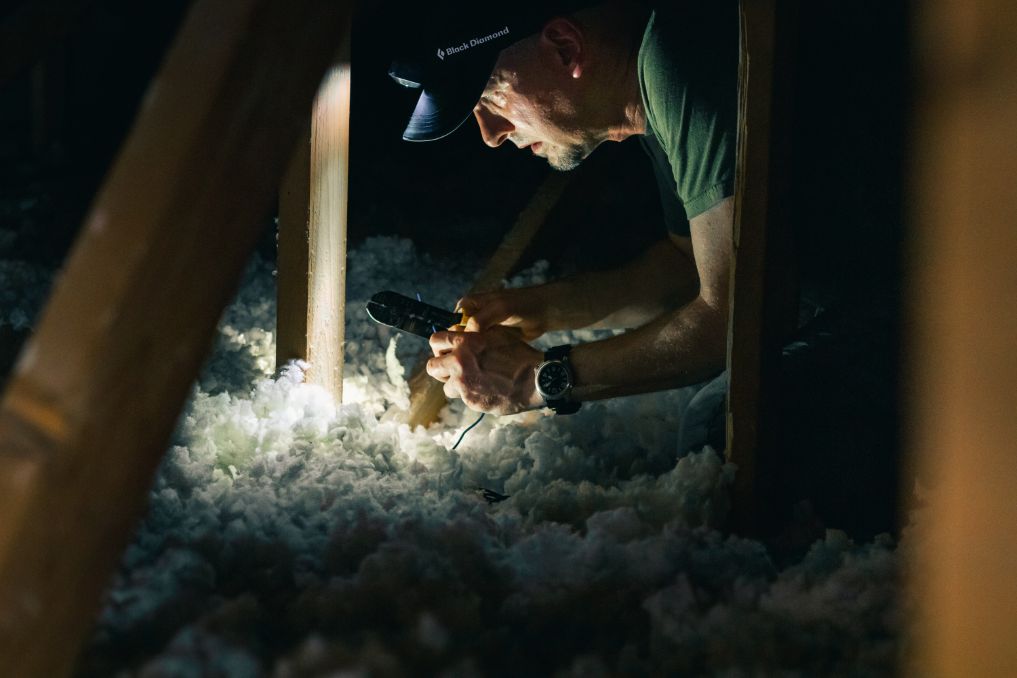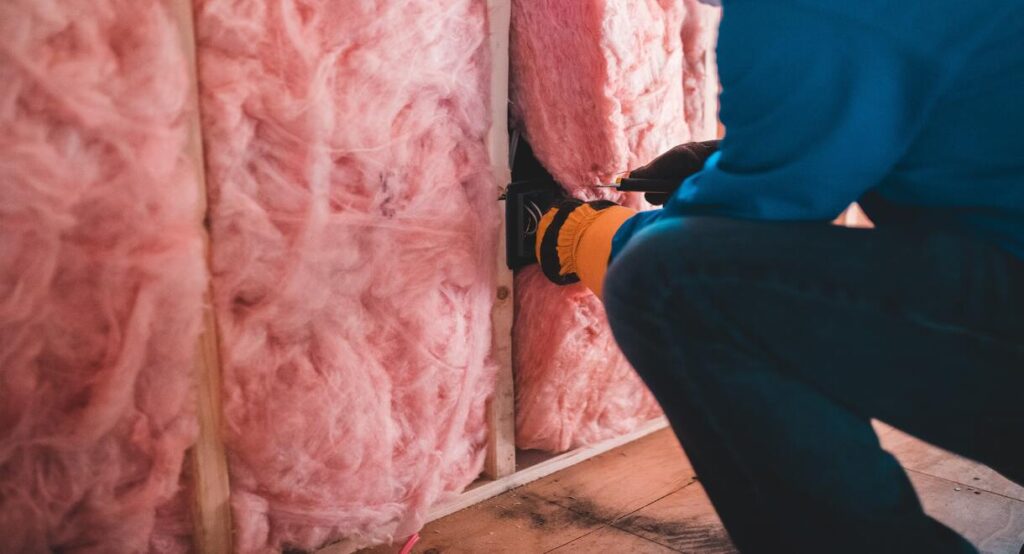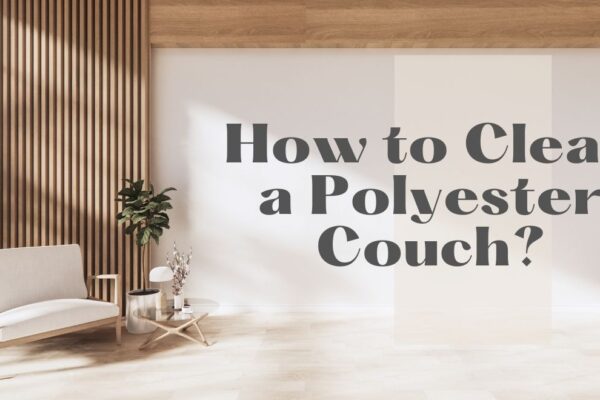Do you experience chilly drafts in the winter or too much heat in the summer despite your home’s interior being properly insulated? Or are the energy costs skyrocketing without a good reason? A solution is to insulate the exterior walls. What kind of insulation should you put, though? Here are several types of exterior walls that you should use different insulation.
- Signs You Need More Insulation
- Why Would You Want Insulation For Exterior Walls?
- Benefits Of Insulating Exterior Walls
- Best Insulation For Open Exterior Walls
- Best Insulation For Enclosed Existing Walls
- Factors That Determine The Best Insulation For Your Exterior Wall
- What If The Exterior Wall Insulation Needs To Be Updated Down The Road?
Signs You Need More Insulation
If your house is not adequately insulated, there are many indications. The following are the most common that you will want to watch for:
- Constantly fluctuating temperatures
- Energy bills that are rising without a known cause
- Exterior walls or ceilings feel hot in summer and cold in winter
- Drafts wafting through the home
- Visible gaps in the insulation
Why Would You Want Insulation For Exterior Walls?
The main reasons for going down the exterior wall insulation route are as follows:
The Walls Of Your Home Don’t Have A Cavity To Insulate
This is typical of older homes and limits your options for wall insulation, leaving you with the choice of either internal or external insulation.
You Don’t Want To Lose Floor Space By Insulating Internally
If you wanted to insulate internally, you would need to apply the insulation to the inner face of the main exterior walls (typically by building a timber frame, installing rigid foam insulation, adding a vapor barrier, and then plastering it).
Accordingly, you would typically lose 100–150mm of floor space (depending on the type of insulation and the desired u-value). You will lose that space on two or more of the room’s exterior walls if it has two or more.
If your home has large rooms, this may not be a major concern, but if it has quite small rooms, it can make a significant difference.
You Want To Minimise Cold Bridging
Cold bridging is the process by which cold is transmitted directly from the outside to the inside of your home through its thick walls. Masonry is a good conductor of heat so the cold passes through the wall quickly.
As air and insulation are poorer heat conductors than masonry, cavities were developed to reduce this problem. Cold air struggles to pass through a cavity.
Benefits Of Insulating Exterior Walls
- All Year Comfort: Insulating exterior walls is one of the fixes for everyone’s comfort in the house. Thus, the temperatures are kept at the desired levels without experiencing cold drafts or too much warmth, whether it is winter or summer.
- Reduced Energy Bills: When the temperatures in your home are just right, your conditioning system does not have to overwork, meaning less energy is used.
- Saving On Floor Space: The interior floor space can be used for other household needs and will be saved.
- Longevity Of The Structure Of Your Home: Insulation on exterior walls will shield your home’s structural elements from the elements.
- Protection Against Fire: The majority of insulation materials are flameproof. Fiberglass, for instance, naturally resists fire, and cellulose is added to some substances to increase their fire resistance.
- Humidity Control: Insulation acts as a barrier, protecting the walls from moisture settling and passing through them. As a result, mold won’t have a chance to grow and potentially harm our health.
- Sound Barrier: Noise is prevented from entering your home by insulation. As a result, your home will be much quieter, which is especially beneficial if you live in a busy neighborhood.
- Aesthetic Improvement: To enhance your home’s appearance to your taste, you might decide to add decorative insulation.
- Protection Against Pest Infestation: Rodents and insects are prevented from entering your home by insulation, which plugs up all the openings.

Best Insulation For Open Exterior Walls
What kind of insulation is ideal for exterior walls that are exposed and open?
There are many variables at work here, but it all comes down to your expectations. Do you prefer the best or are you searching for a less expensive alternative? Do you value lowering your carbon footprint and maximizing energy efficiency? Let’s discuss open exterior wall insulation options in more detail.
Fiberglass Insulation
One of the options will require you to remove your drywall, and that option is fiberglass insulation.
The material would be installed in the stud cavities as rolls or batts and is made of incredibly fine glass fibers. The spread of hot and cold air is slowed down by fiberglass, but air can still enter and exit the house.
If you feel confident in your abilities, you can install fiberglass yourself. It’s a reasonably affordable option for exterior wall insulation. The drawback is that fiberglass has an expiration date and will eventually need to be replaced because it has a tendency to sag and shift with time.
That less expensive choice becomes significantly more expensive when you factor in this ongoing expense, the price of remodeling your walls, and the materials needed for the DIY project if you decide to do it.
Foam Board Insulation
If you don’t mind tearing out your drywall, you will need to install foam board insulation as part of your remodeling project.
Polystyrene, polyisocyanurate, and polyurethane are the three materials that makeup foam boards, which are rigid panels. To specifically fit the wall cavities, these boards are offered for sale in a variety of lengths, facings, and lengths.
However, it is a one-time thing, unlike fiberglass. Once you install the foam board, you won’t need to replace it or hire a contractor to install it. One thing to keep in mind is that sealing the seams between the boards is essential to prevent air leakage.
Spray Foam Insulation
Spray foam is the best material to use if you want to create an air seal that will help keep the temperature in your home constant.
For open wall cavities, spray foam insulation offers an eco-friendly solution. Spray foam is combined with either water or a chemical agent, depending on the manufacturer and the material.
For residential projects, open cell spray foam is typically advised. When the foam stretches, the cavity is entirely filled. Although closed cell foam can be used, exposed walls are a better fit for it because of their greater durability.
With either spray foam, airflow into and out of the walls will be stopped, increasing the comfort and energy efficiency of the house.
Best Insulation For Enclosed Existing Walls
The remodeling project might not be your style or fit within your budget.
It’s OK because you can still add insulation without having to tear your house apart.
There is no need to remove any drywall because both blown-in cellulose and injection foam insulation can be installed from the outside of your home.
Let’s examine the advantages of each choice.
Blown-In Cellulose Insulation
You can still add insulation to your house without completely remodeling it if that’s not what you want to do.
From the outside of your home, blown-in cellulose can be installed. The installer will take out a row of siding before drilling holes in the sheathing and blowing in the cellulose.
Although using this technique won’t require tearing apart your home, it can be messy.
Recycled newspaper or denim is used to make cellulose. Due to its consistency, when the material is blown in, the dust from it can enter through outlets and vents and spread throughout your house.
Additionally, cellulose is prone to shifting and settling over time, so there may be coverage gaps.
Injection Foam Insulation
The same techniques used for blown-in cellulose installation also apply to injection foam insulation, such as RetroFoam.
When combined with a foaming agent, water, and a resin with a tri-polymer structure, RetroFoam creates injection foam insulation. When the substance is injected into the wall, it fills every crevice because of its shaving cream-like consistency.
The main distinction between injection foam and the other available wall insulation options is that it is the only one to produce an air seal. The outside elements are kept out while the air you pay to heat or cool remains inside where you want it.
Your home’s comfort and energy efficiency will improve thanks to this air seal.
Additionally, the injection foam won’t ever need to be changed or have anything added to it so that you can continue to insulate your current walls.
Wet Applied Cellulose Insulation
Although there are many different types of cellulose insulation, wet-applied cellulose will be used in open wall cavities.
Cellulose is the oldest home insulation available on the market today. It is made from recycled newspapers, and the tiny particles are good at fitting into most spaces.
During application, water is added to cellulose that has been wet applied. It has the same insulating and acoustic qualities as densely packed cellulose.
Nu-wool Insulation
Nu-Wool is known to be a premium cellulose insulation that is either wet applied or installed in batts.
For projects where the walls are exposed, such as new construction or remodeling, Nu-Wool batts are used. The batts are composed primarily of renewable fibers and recycled materials, to the extent of 70%. Because they are so dense, the rolls and batts are made to fit tightly inside the wall cavity.
The batts’ density contributes to the home’s soundproofing.
Foil-Faced Insulation
Depending on the time of year, foil-faced insulation does a great job of preventing heat transfer into or out of the home.

Typically, fiberglass batts are used to make the foil-faced insulation. In addition to serving as a vapor retarder, the foil on the insulation is intended to assist in reducing heat loss.
Factors That Determine The Best Insulation For Your Exterior Wall
Cost
Higher R-value insulation materials are generally more expensive, but they are also very effective at blocking heat and cold. Therefore, the kind of insulation you can afford will depend on your budget.
However, you might decide to spend a little more on expensive insulation that is also effective and long-lasting.
Durability
You would be making the right decision if you selected long-lasting insulation. Spending money to replace it after a few years would be a waste.
Ease Of Installation
Selecting an insulation type that only requires drilling holes and installation rather than requiring you to demolish a finished wall would be much preferable. If renovations are necessary, such as installing rigid foam boards, they become more difficult and involve tearing down walls.
R-Value
The R-value needed in the insulation material you will use is largely determined by the climate where you live, as was previously stated in this post. Insulation in colder climates will need higher R-values than in warmer climates.
What If The Exterior Wall Insulation Needs To Be Updated Down The Road?
What choices do you have if the walls of your current house are closed in? Will you need to remove your drywall in order to replace your old insulation?
Friends, there are insulation options available to you that won’t require any kind of home interior disruption or demolition. In fact, you have two options for insulation that can be installed from the outside: blown-in cellulose and injection foam insulation.
The process for both of these materials is the same but can vary depending on the type of siding your home has.
A row of siding must be removed from the aluminum or vinyl-sided house before drilling a hole through each stud cavity. The cavity is then filled with insulation using an injection or blower. After that, the siding is changed and the hole is filled.
Three holes are drilled into the mortar where each stud cavity is in a brick-sided house using a different procedure. The insulation is then injected into the top, middle, and bottom of the cavity. An excellent builder will re-mortar those holes that were drilled.
Last but not least, the process will depend on the state of the wood siding if the home has it. The treatment of wood is similar to that of vinyl or aluminum siding if the wood can be removed.
Otherwise, the workers will have to drill through the wood to inject or blow in the insulation. A tapered pine wood plug is used to plug the holes after the wall cavities have been completely filled.
The most effective insulation affects conduction, heat transfer, and convection, or airflow, which can affect your home’s comfort and energy efficiency.
While cellulose is resistant to heat that is transferred through conduction, it doesn’t create an air seal that will keep the air you pay to treat inside and the outside air out, as it still allows for air movement.
To reduce air leakage, foam insulation works best because it provides heat resistance and an air seal.
Read More: How To Tell The Difference Between Cellulose And Asbestos Insulation?





